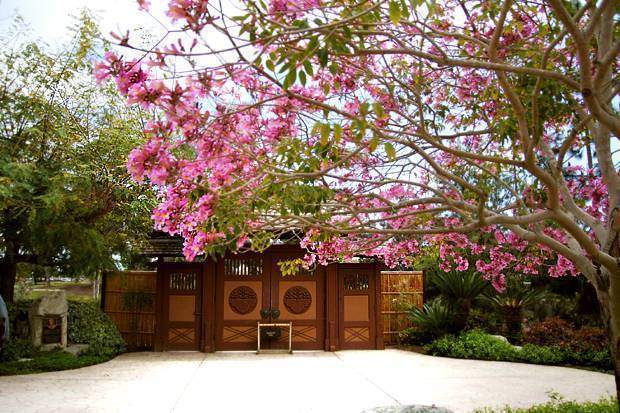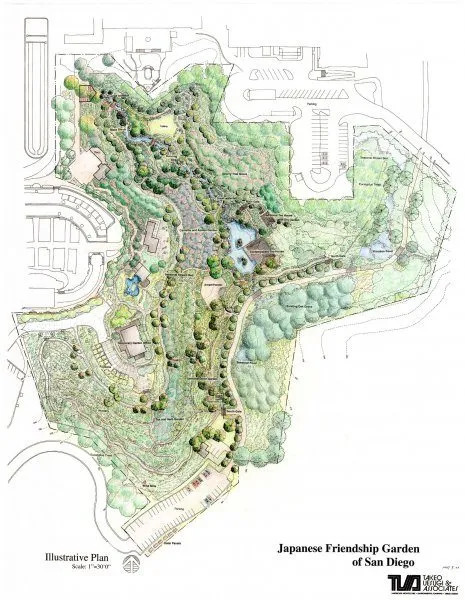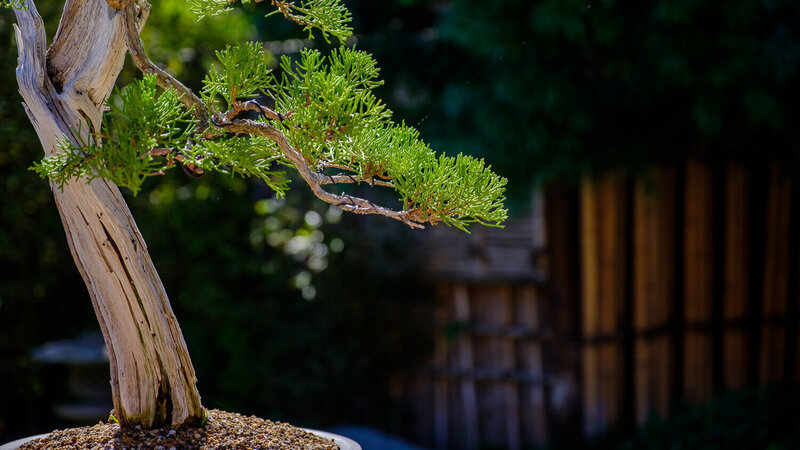From Dismantlement to New Creation
After the teahouse fell into a state of disrepair and also saw 'super-patriots' vandalize it several times, it was boarded up. In 1954, president of the Zoological Society, Milton G. Wegeforth, asked the City of San Diego to set aside the 2 acres occupied by the Teahouse in order to replace it with a Children’s Zoo. The request was granted a year later the Teahouse and its surroundings were demolished in order to start construction for the new zoo. [1]
In later years following WWII, San Diego would became an early participant in the 'Sister City' program, and developed close ties with the city of Yokohama, Japan. Throughout the post-war era, series of gifts from the Sister City program, as well as financial support from local and Japanese businesses, encouraged San Diego leaders to consider a new Japanese garden in Balboa Park. [2]
In August 1990, the first phase of the new Japanese Friendship Garden and opened a year later on 2.5 acres situated south from its original location. The Japanese Friendship Garden was created as an expression of friendship between San Diego and its sister city, Yokohama, illustrating two cultures, creating an immersive experience into Japanese culture. A second phase of improvements was added in 1999, designed by renowed landscape architect Takeo Uesugi. This phase added the Exhibit Hall, Activity Center, and Koi Pond. In 2015, a thrid phase added 9 additional acres, including a grove of 200 cherry trees, a large azalea and camellia garden, a water feature reminiscent of the San Diego watershed, and the state of the art Inamori Pavilion. [2]
Today the garden sits on a total of 12 acres and has added various educational programs, exhibits, and festivals as well as accredited horticultural classes. As a valued community resource, it is well known for its unique setting, stone arrangements, koi ponds, water features, sukiya-style buildings and landscape. The garden’s design is based on centuries-old Japanese techniques adapted to San Diego’s climate and florae and seeks to foster a relationship between humans and nature, providing a respite attuned to Japanese simplicity, serenity, and aestheticism. [3]
[1] Amero, Richard. “Panama-California Exposition - San Diego History Center: San Diego, CA: Our City, Our Story.” San Diego History Center | San Diego, CA | Our City, Our Story, May 31, 2016. https://sandiegohistory.org/archives/amero/1915expo/.
[2] “Our Past.” Origin of the Japanese Friendship Garden After the World Exposition. Japanese Friendship Garden San Diego, n.d. https://www.niwa.org/past.
[3] “Japanese Friendship Garden: An Immersive Experience.” Balboa Park. BPOC. https://balboapark.org/arts-culture/japanese-friendship-garden/.




